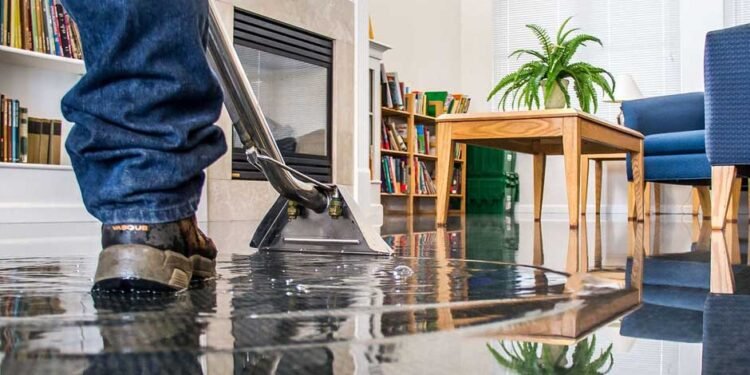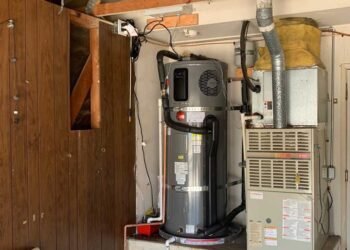Water damage is joint and frequently disruptive from diverse sources, including floods, burst pipes, or plumbing leaks. When water damage strikes, Castle Management in Antioch advises that restoration is paramount to restore affected properties to their pre-damage condition. We will investigate the step-by-step process of water damage restoration, from initial assessment to final repairs, emphasizing the significance of professional expertise and effective strategies.
Step-by-step process of water damage restoration
Initial Assessment:
The first step in the water damage restoration process is the initial assessment. This involves thoroughly evaluating the extent of the damage and the affected areas. Restoration professionals inspect the property to determine the source of water, the category of water damage (clean, grey, or blackwater), and the level of contamination. This assessment guides the development of a tailored restoration plan. The initial assessment also includes documenting the damage through photographs and notes. This documentation is crucial for insurance claims and restoration progress tracking.
Safety Precautions:
Safety is paramount during the water damage restoration process. Restoration professionals ensure that the affected areas are safe for occupancy and implement safety measures as needed. If electrical hazards are present due to water exposure, electricity is turned off to prevent electrical shock. Additionally, professionals may identify and address structural concerns that pose safety risks. Ensuring safety for both occupants and restoration workers is a top priority.
Water Removal and Extraction:
Effective water removal and extraction are critical to halt further damage and prevent the proliferation of mold. Restoration professionals use specialized equipment, such as pumps and wet-dry vacuums, to extract standing water from the property. The goal is to remove as much water as possible, including water absorbed by building materials and contents. Thorough water extraction is essential to reduce the drying time and minimize structural damage. Quick action can also prevent mold growth, which can occur within 24 to 48 hours after water exposure.
Moisture Detection and Measurement:
After water removal, restoration professionals employ moisture detection and measurement tools to assess the moisture levels in the affected areas. Moisture meters and thermal imaging cameras are commonly used to identify hidden moisture pockets within walls, ceilings, and floors. Accurate moisture measurement is essential for determining the extent of the damage and tracking the progress of drying efforts. This data helps restoration professionals make informed decisions regarding equipment placement and drying strategies.
Structural Drying:
The structural drying phase is a critical aspect of water damage restoration. Restoration professionals strategically place air movers, dehumidifiers, and drying equipment to facilitate drying. Air movers promote air circulation, while dehumidifiers extract excess moisture from the air. The drying process typically takes several days to complete, depending on the severity of the damage and the moisture levels. Restoration professionals continuously monitor the progress and adjust equipment to ensure thorough drying.
Content Restoration:
Water damage often affects personal belongings and contents within the property. Restoration professionals assess the damage to contents and initiate content restoration efforts. Salvageable items are cleaned, dried, and restored to their pre-damage condition whenever possible. Specialized techniques may be employed to restore valuable items, such as freeze-drying for documents and electronics. The goal is to minimize losses and preserve the homeowner’s possessions.
Structural Repairs:
Restoration professionals assess the need for structural repairs once the affected areas are thoroughly dried and cleaned. Structural damage can result from prolonged water exposure, and weakening materials like drywall, flooring, or support beams. Structural repairs may include replacing damaged materials, reinforcing weakened components, or even rebuilding sections of the property. Restoration professionals work to restore the property’s structural integrity to its pre-damage condition.
Cleaning and Sanitization:
After structural repairs and mold remediation, the affected areas are thoroughly cleaned and sanitized. Restoration professionals use antimicrobial agents to disinfect surfaces and prevent microbial growth. This step helps ensure a safe and hygienic environment. Cleaning and sanitization extend to all surfaces, including walls, floors, ceilings, and contents. Restoration professionals pay special attention to areas directly affected by water damage to eliminate potential contaminants.
Communication with Homeowners:
Restoration professionals communicate openly with homeowners or property owners throughout the water damage restoration process. They furnish updates on the progress, explain the steps, and address any questions or concerns. Restoration professionals also work closely with homeowners to coordinate repairs and ensure the property is returned to its pre-damage condition to the best extent possible.
Water damage restoration is a comprehensive process that requires professional expertise, specialized equipment, and a systematic approach. From the initial assessment to structural drying, mold remediation, content restoration, and final inspection, restoration professionals work diligently to bring affected properties back to their pre-damage condition. Effective communication with homeowners and coordination with insurance companies are also paramount aspects of the restoration process. Timely and top-rated water damage restoration company efforts are paramount in minimizing property damage, health risks, and long-term complications linked with water damage incidents.












